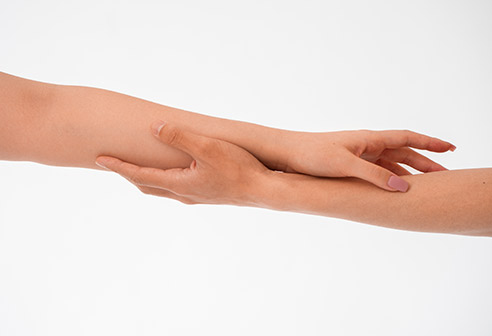
Exosome therapy is an innovative medical aesthetic treatment that can be used for many purposes. Exosome therapy is utilized for a wide range of issues, from preventing hair loss to supporting the immune system, and from skin rejuvenation to accelerating wound healing. However, for exosome therapy to be successful, exosome sources, production methods, and clinical efficacy are of great importance. Your Medical Aesthetic Doctor, Dr. Lida Çiteli, explained what you need to know about exosome types.
Exosome Sources (Where and How Exosomes Are Obtained)
Exosomes can be obtained from various cells. Exosome sources include the umbilical cord, stem cells, and human serum. Exosomes obtained from these sources are the most popular. Each exosome source consists of different biological components and has different healing properties. This means the effectiveness of the treatment is closely related to the source from which the exosome is obtained. Let's examine these one by one:
Exosomes Derived from Serum
Exosomes produced from human serum are the most accessible. These exosomes have various regenerative properties. Exosomes produced from human serum are mostly preferred in skin rejuvenation treatments.
Umbilical Cord Exosomes
Exosomes obtained from the umbilical cord are the most valuable type of exosomes in terms of biological richness. They contain growth factors that encourage cells to renew themselves. They have active components similar to microRNA and cytokines. Therefore, exosomes produced from the umbilical cord have a high clinical effect in treatments aiming for skin rejuvenation and repair.
Stem Cell-Derived Exosomes
The components of exosomes derived from stem cells have extremely high biological activity. They enable successful results in many procedures, from the healing of connective tissue to skin regeneration.
Which is the Best Exosome Source? Umbilical Cord or Serum?
Exosomes obtained from the umbilical cord are considered the most effective type of exosome due to their cellular components. Umbilical cord exosomes contain natural growth factors and proteins. This makes them the most frequently preferred type of exosome in wound healing and skin rejuvenation applications. In serum exosomes, the skin receives gentle regenerative support. The biological density level of these exosomes is quite low compared to the umbilical cord.
Which Exosome Type Has the Highest Clinical Efficacy?
Clinical studies show that exosomes obtained from the umbilical cord provide fast and long-lasting results in wound healing, wrinkle reduction, and skin rejuvenation. Umbilical cord exosomes contain components naturally present in skin tissue. They increase the skin's elastin and collagen production. As a result, the person gains a much healthier and younger appearance.
Umbilical Cord-Derived Exosomes and Their Properties
Efficacy
Scientific studies show that exosomes produced from the umbilical cord have a high level of biological activity. Therefore, umbilical cord exosomes show the strongest treatment effect in areas such as skin rejuvenation, wrinkle treatment, and wound healing. The cytokines and growth factors they contain trigger elastin and collagen production. As a result, the person's skin gains a much firmer, younger, and smoother appearance.
Advantages
Umbilical cord exosomes have a biologically rich content. This ensures that the results act quickly. They are beneficial in balancing the skin's moisture level, renewing cells, and increasing elasticity.
Disadvantages
Like exosomes produced from the umbilical cord, stem cell-derived exosomes also have high costs. They need to be produced under special laboratory conditions. Furthermore, the stem cells used for exosomes must be obtained from reliable sources and processed meticulously.
Serum-Derived Exosomes and Their Properties
Efficacy
Exosomes produced from serum show a much milder biological effect. Generally, they support the skin's self-renewal process. However, compared to umbilical cord exosomes, their wrinkle reduction and tightening effect remains quite limited. Serum exosomes provide a superficial level of effect for superficial skin problems.
Advantages
Exosomes obtained from serum are much more cost-effective. They are generally an ideal option for people who want to provide regenerative support against mild damage. In addition, they are an attractive option for people considering a soft start in skincare.
Disadvantages
Compared to exosomes obtained from the umbilical cord or stem cells, they provide a milder effect. They are not sufficient material for people who want to achieve long-lasting and much more significant results. The effect of serum exosomes is often short-term and needs to be repeated more frequently.
Stem Cell-Derived Exosomes and Their Properties
Efficacy
These exosomes are obtained from mesenchymal stem cells. They provide a deeper healing effect in the structure of skin tissue. They accelerate the cellular renewal process and support collagen synthesis, enabling the skin to acquire a much more flexible and strong structure. Exosomes obtained from stem cells are an effective solution against the signs of aging that occur in the skin.
Advantages
Exosomes obtained from stem cells have a very deep effect on skin rejuvenation. They contribute successfully to wound healing. They are an attractive option, especially for skin problems such as chronic scars and deep wrinkles.
Disadvantages
Like exosomes produced from the umbilical cord, stem cell-derived exosomes also have high costs. They need to be produced under special laboratory conditions. In addition, the stem cells used for exosomes must be obtained from reliable sources and processed meticulously.
What Should Be Considered When Choosing Exosomes?
When performing exosome therapy, the source from which the exosome is produced must be reliable. Clinical efficacy and the experience of the doctor performing the treatment are of great importance. Exosomes produced from serum may be attractive because they are cost-effective. In contrast, exosomes produced from the umbilical cord provide more serious efficacy. Their costs are therefore higher. Exosome selection should be made according to the patient's and the treatment's requirements. To obtain more successful results, it is beneficial to consult your medical aesthetic doctor or dermatologist before exosome therapy.
Which Type of Exosome Should Be Preferred?
To achieve the most successful results in exosome therapy, the exosome source most suitable for the skin's needs should be preferred. Umbilical cord exosomes provide long-lasting effects. Therefore, they are one of the most in-demand types of exosomes. In addition, people who do not have very serious problems and want a mild rejuvenation can prefer serum-derived exosomes.



